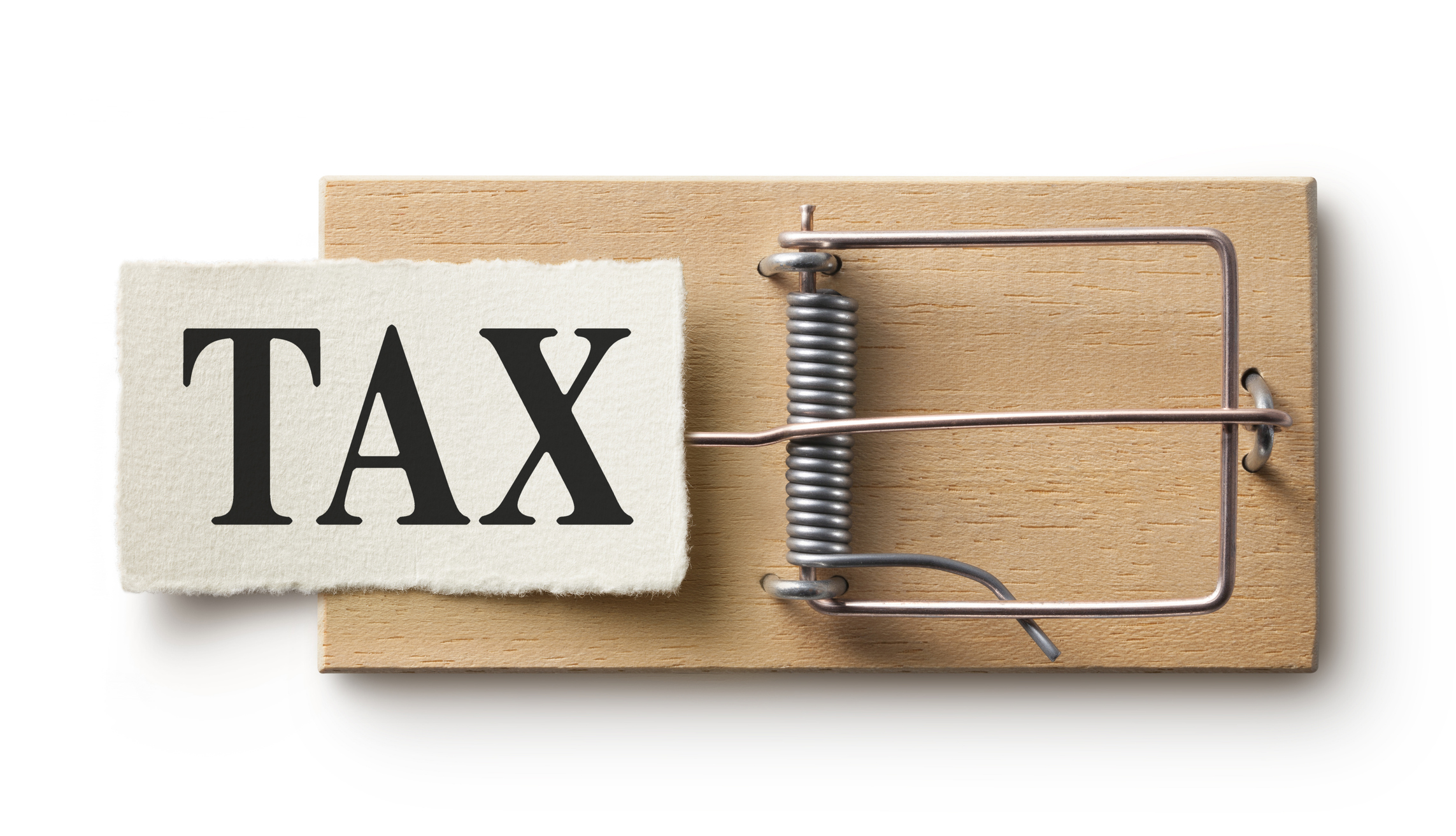What is the 60% tax trap?
If you're a high earner - or about to become one - you may fall into the 60% tax trap. But what is it and how can you avoid it?


Earning a six-figure salary may seem like a reason to celebrate, but you are also joining an exclusive group that no-one really wants to be part of - the 60% tax club.
On the surface, Britain's highest income-tax band is 45%, and that is only paid by those earning over £150,000.
But thanks to a quirk in the tax laws, people earning above £100,000 pay an effective 60% income-tax rate on part of their salary. That could hit people before they know it as frozen tax thresholds bring more earners into higher tax bands, known as fiscal drag.
MoneyWeek
Subscribe to MoneyWeek today and get your first six magazine issues absolutely FREE

Sign up to Money Morning
Don't miss the latest investment and personal finances news, market analysis, plus money-saving tips with our free twice-daily newsletter
Don't miss the latest investment and personal finances news, market analysis, plus money-saving tips with our free twice-daily newsletter
The trouble is, the 60% tax trap is a bit of a secret and you are unlikely to notice it unless you have especially high earnings, meaning you may not even realise you are paying it.
What is the 60% tax trap?
There are essentially four main income tax bands.
First, there is no income tax paid on up to £12,570 of earnings, known as the personal allowance.
Then, anything between £12,571 and £50,270 is charged at the basic rate of 20%.
If you earn between £50,271 and £125,140, you become a higher rate taxpayer and that portion is charged at 40%.
Anything above £125,140 is charged at an additional rate of 45%.
But, unfortunately the tax system isn't as simple as the above.
As soon as you start earning more than £100,000, your personal allowance tapers away.
It decreases at a rate of £1 for every £2 you earn above £100,000.
So, once you earn £123,000, you lose your entire £11,500 personal allowance.
This means someone earning £123,000 pays £42,500 a year in income tax, as they face the double whammy of the lost personal allowance and, as a result, more income being taxed at 40%.
That is £13,800 more tax than someone earning £100,000 and amounts to a 60% income-tax rate on earnings between £100,000 and £123,000, one of the highest income-tax rates in Europe.
It is also worse if you are a parent as you lose access to free childcare hours once you earn above £100,000 and will subject to the higher income child benefit charge.
"In the labyrinth of British taxation lurks a beast that few see coming, a 60% effective tax rate.” Says Gabriel McKeown, head of macroeconomics at Sad Rabbit Investments.
“With careful planning and the right strategies, high earners can turn this potential pitfall into an opportunity for more proactive wealth management. So, while the 60% tax trap may seem like a fiscal black hole threatening to swallow hard-earned income, it need not be a financial death sentence.”
How to avoid the 60% tax trap
Essentially, you need to reduce your tax liability by earning less.
That doesn't mean taking a pay cut or rejecting a rise but there are legitimate ways to reduce your take-home pay and how much is owed to the taxman.
For example, you could use salary sacrifice schemes that pay for certain work costs before tax is taken.
This could include taking part in a Cycle-to-Work scheme that lets you pay for a bike in monthly instalments out of your gross salary.
Someone paying the 60% tax rate could use this salary sacrifice to buy a bike worth £1,000 for just £400.
If you lease a company car and it is ultra-low emission you can save around 30% of the cost by doing it via salary sacrifice. Just be very careful what car you choose, as cars with higher emissions may have a tax charge of up to 37%.
Another popular option is increasing your pension contributions.
"Making pension contributions is a highly effective strategy, as it reduces your adjusted net income by expanding your basic rate tax band allowing you to keep more of your personal allowance while also providing significant tax relief," says Anita Wright, independent financial adviser at Bolton James.
"Many of my high-earning clients use pensions as a tax planning tool, gaining up to 60% tax reduction."
Chloe Phillips, chartered financial planner at Pura Vida Financial Planning, adds that putting more into your pension can reduce your tax bill and also help regain tax free childcare and your personal allowance if it is taken down by enough.
But don't forget you will need to claim these allowances back if you are a high earner, as Phillips adds: "This is is claimed via your self assessment tax return and does not happen automatically."
It is also worth making use of other tax allowances such as your ISA and see if you can move assets to your spouse if they are in a lower tax bracket.
"You can use ISAs to keep your savings income tax-wrapped," says Adam Pickett, independent financial adviser at McLaren Capital, and use a lower income partner to hold rental properties."
Get the latest financial news, insights and expert analysis from our award-winning MoneyWeek team, to help you understand what really matters when it comes to your finances.

Marc Shoffman is an award-winning freelance journalist specialising in business, personal finance and property. His work has appeared in print and online publications ranging from FT Business to The Times, Mail on Sunday and the i newspaper. He also co-presents the In For A Penny financial planning podcast.
-
 Boost for over 100,000 families on Child Benefit as new HMRC payment system rolled out
Boost for over 100,000 families on Child Benefit as new HMRC payment system rolled outThousands of households will no longer have to pay the dreaded High Income Child Benefit Charge through self-assessment
-
 Are you being haunted by the ghost of Christmas past? How festive cutbacks could boost your long-term wealth
Are you being haunted by the ghost of Christmas past? How festive cutbacks could boost your long-term wealthThe average family spends around £1,000 over the Christmas season. Here’s how much you could have gained if you had invested some of the money instead.